The natural world is full of remarkable adaptations, but few are as simultaneously fascinating and feared as the fangs of snakes. These specialized teeth represent one of evolution’s most effective hunting tools, allowing snakes to capture prey through a combination of venom delivery and physical restraint. Snake fangs vary dramatically across species, with different positions, structures, and functions that reveal much about a snake’s ecological niche and hunting strategy. From the iconic striking cobras with their front-fixed fangs to the ambush specialists with rear-positioned fangs, these dental adaptations tell the evolutionary story of snakes as predators. This article explores the remarkable diversity of snake fangs, their evolution, and how understanding fang types can help us better appreciate these often misunderstood reptiles.
The Evolution of Snake Fangs
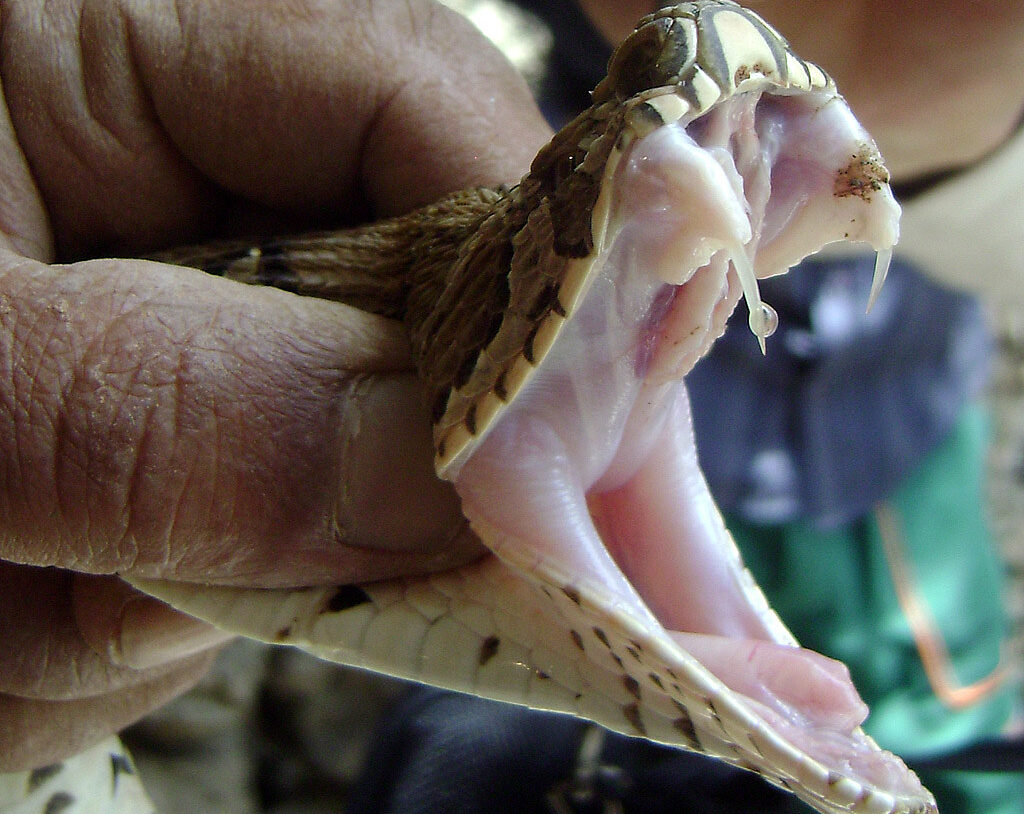
Snake fangs represent one of nature’s most sophisticated weapons, evolving over millions of years from simple teeth into specialized venom-delivery systems. Scientists believe that fangs evolved independently multiple times in different snake lineages, demonstrating convergent evolution toward an effective predatory adaptation. The earliest snake ancestors likely possessed simple, uniform teeth similar to those found in modern non-venomous snakes like pythons and boas. Over time, selective pressures favored modifications that allowed more efficient prey capture, leading to the development of enlarged teeth, grooves for venom flow, and eventually the hollow fangs we see in advanced venomous species today. This evolutionary journey reflects the arms race between predator and prey, with snakes developing increasingly sophisticated weapons to overcome prey defenses and escape mechanisms.
The Basic Anatomy of Snake Fangs
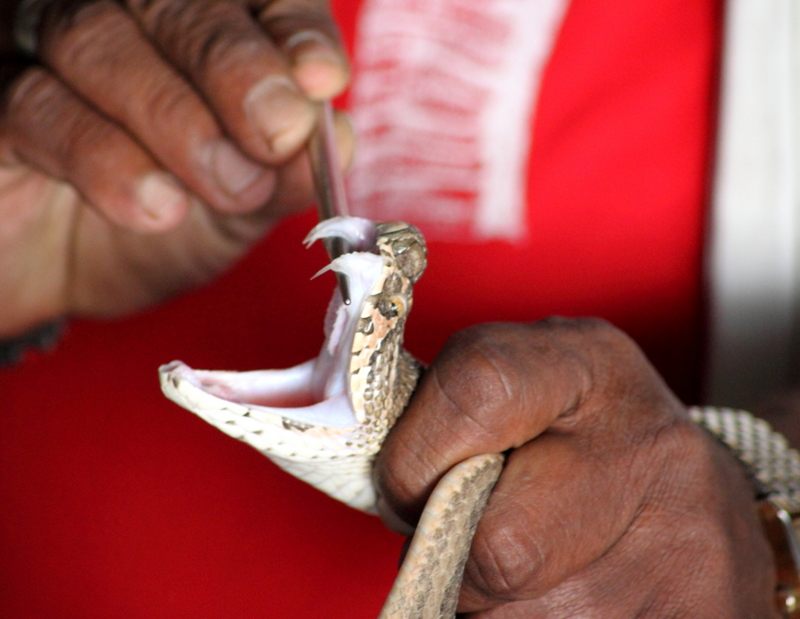
Snake fangs are specialized teeth fundamentally different from the rest of the dental array in both structure and function. Unlike human teeth with their various types for different functions, snake fangs are primarily designed for a single purpose: penetrating prey tissue and delivering venom. Structurally, fangs are typically longer, sharper, and more curved than other snake teeth, with many species having hollow or grooved structures that facilitate venom flow. The fang connects to a venom gland (modified salivary gland) through a duct system that allows venom to travel from the gland through the fang and into prey. Most venomous snakes possess a pair of fangs on the upper jaw, though the exact position, mobility, and replacement patterns vary significantly between species. This specialized dental equipment represents one of the most efficient biological weapons in the animal kingdom.
Proteroglyphous Fangs: The Front-Fixed System
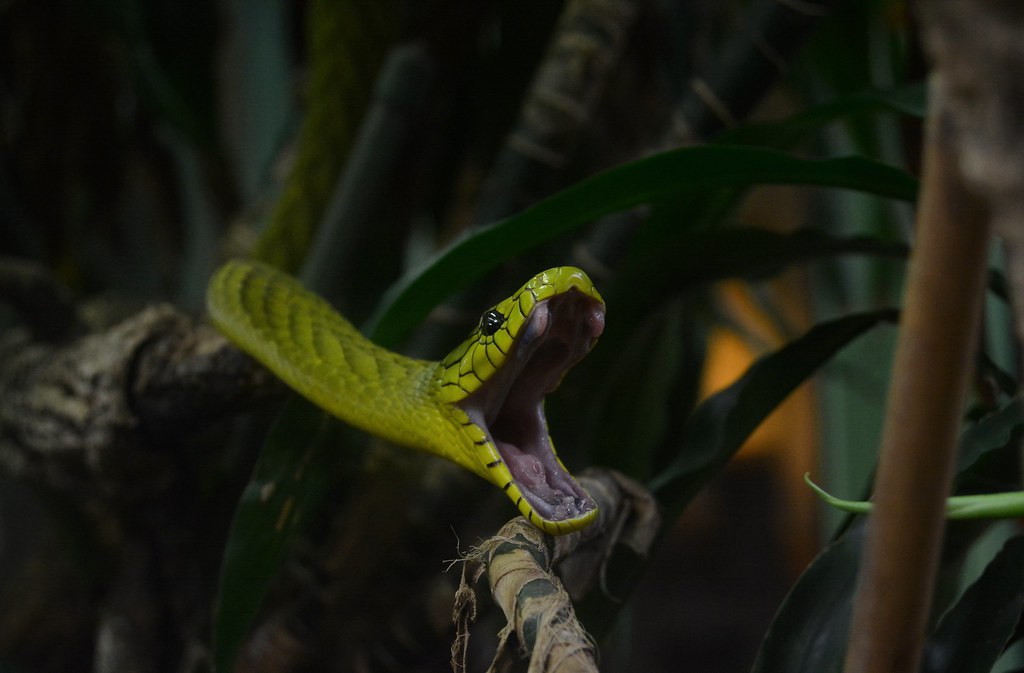
Proteroglyphous fangs are the hallmark of elapid snakes, a family that includes cobras, mambas, coral snakes, and sea snakes. These fangs are permanently erect at the front of the snake’s upper jaw, relatively short compared to other fang types, and cannot be folded back. The fang structure features a small hollow canal or groove running along the front surface that channels venom from the venom gland into the prey during a bite. Because these fangs are shorter and fixed in position, elapids typically need to hold onto their prey momentarily to ensure effective venom delivery, often employing a “bite and hold” strategy.
The fixed nature of these fangs means they’re always ready for immediate deployment, allowing for quick strikes with minimal preparation. Proteroglyphous snakes are responsible for many serious and fatal envenomations worldwide due to their potent neurotoxic venoms that compensate for their relatively simpler fang system.
Solenoglyphous Fangs: The Hinged Specialists

Solenoglyphous fangs represent the most advanced venom delivery system found in vipers and pit vipers, including rattlesnakes, copperheads, and gaboon vipers. These fangs are exceptionally long, hinged, and can fold back against the roof of the mouth when not in use, allowing the snake to close its mouth safely. When the snake strikes, specialized muscles rotate the maxillary bone, swinging the fangs forward into an attacking position like switchblades.
The fangs themselves are hollow with a complete internal canal running through their center, functioning essentially as hypodermic needles that inject venom deep into prey tissue. This sophisticated system allows vipers to strike quickly, inject venom deeply, and immediately release their prey to avoid potential injury from struggling victims. The length of these fangs can be remarkable—the Gaboon viper possesses fangs up to two inches long, the longest of any snake relative to body size.
Opisthoglyphous Fangs: The Rear-Fanged Design
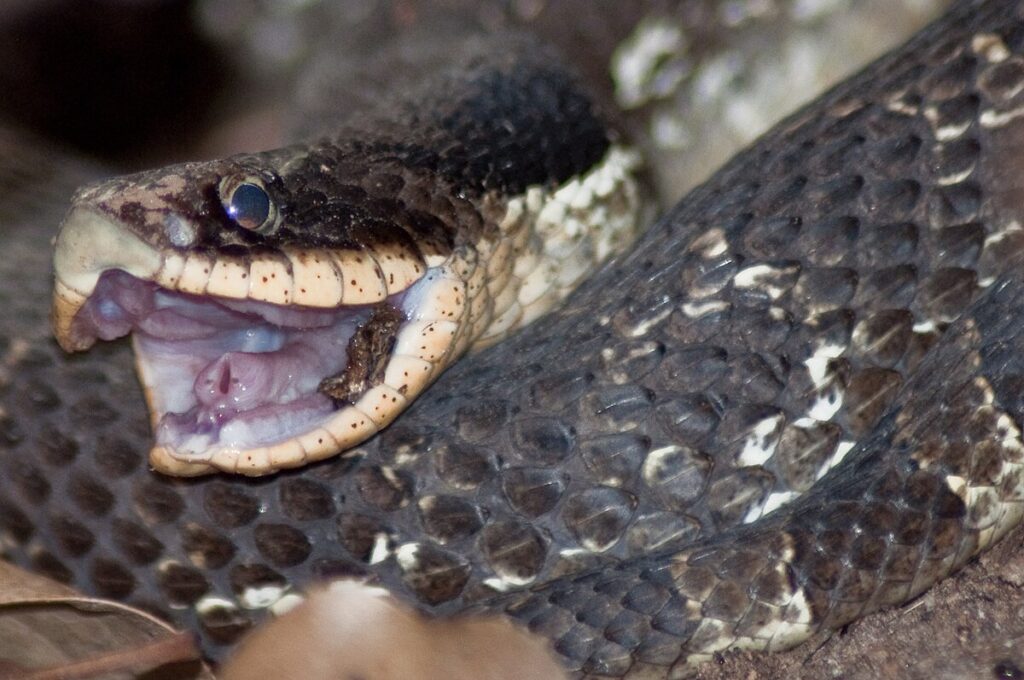
Opisthoglyphous fangs are found in a diverse group of mildly venomous snakes often called “rear-fanged” snakes, including vine snakes, hognose snakes, and some water snakes. These fangs are located toward the back of the upper jaw and typically feature grooves rather than complete hollow canals for venom delivery. The positioning requires these snakes to get prey items relatively deep into their mouths before the fangs can effectively deliver venom, often necessitating a chewing motion to ensure envenomation. Because of this mechanical limitation, most rear-fanged snakes have evolved mild venoms primarily designed to subdue small prey rather than for defensive purposes. This fang system represents an intermediate evolutionary stage between non-venomous snakes and the more advanced front-fanged species. Many rear-fanged snakes were historically considered harmless to humans, though research has revealed that some species can produce medically significant envenomations despite their seemingly primitive venom delivery system.
Aglyphous Teeth: The Non-Venomous Approach
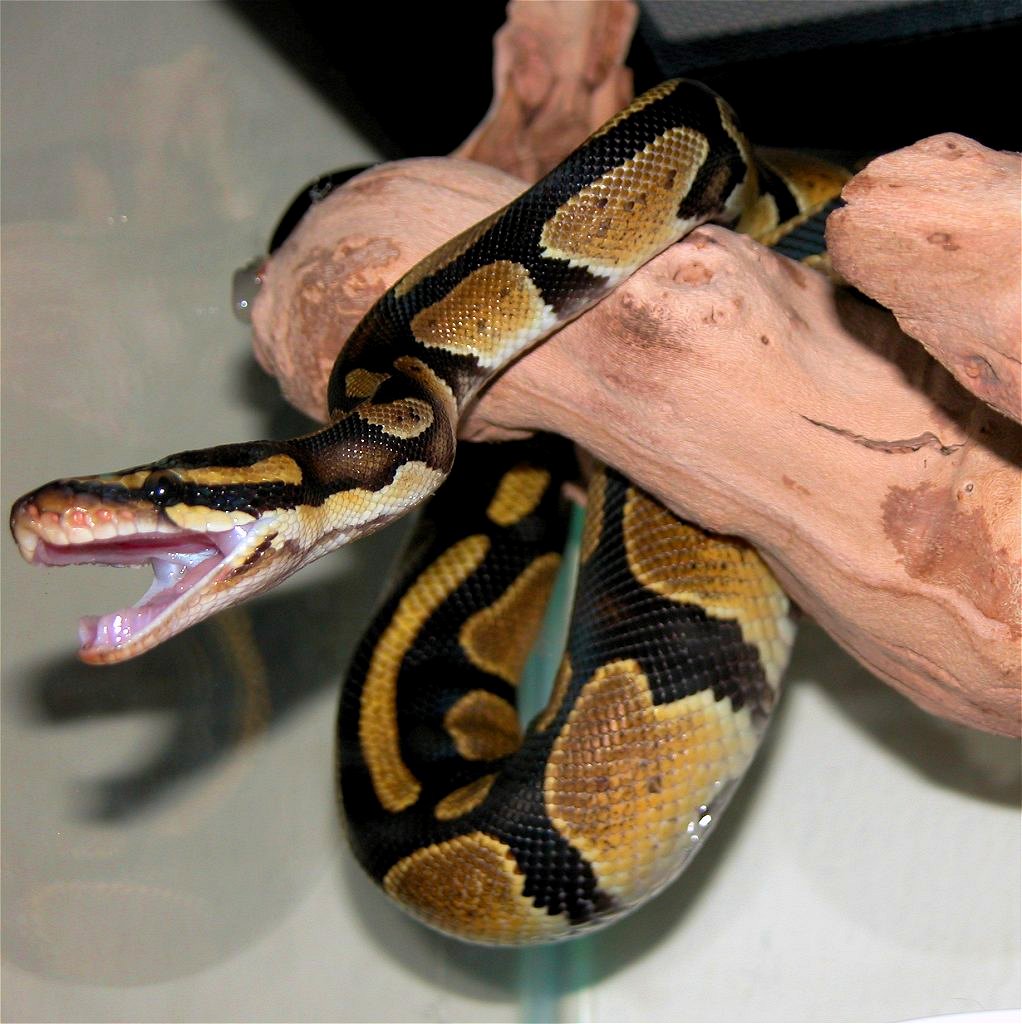
Aglyphous teeth are found in non-venomous snakes like pythons, boas, and many colubrids, representing the most primitive dental arrangement in snakes. These snakes possess multiple rows of solid, sharp teeth that curve backward toward the throat, with no specialized fangs or venom delivery mechanisms. The backward-facing orientation helps prevent prey from escaping once captured, functioning essentially as natural barbs that make it difficult for prey to pull away.
In larger constrictors like pythons and anacondas, these teeth primarily serve to grip prey while the snake’s powerful body coils around the victim to constrict it. Although lacking venom, these teeth can still deliver painful bites that may cause significant lacerations requiring medical attention. The aglyphous dental pattern demonstrates that even without venom, snake dentition has evolved impressive adaptations for predatory success.
Fang Replacement: Nature’s Dental Plan
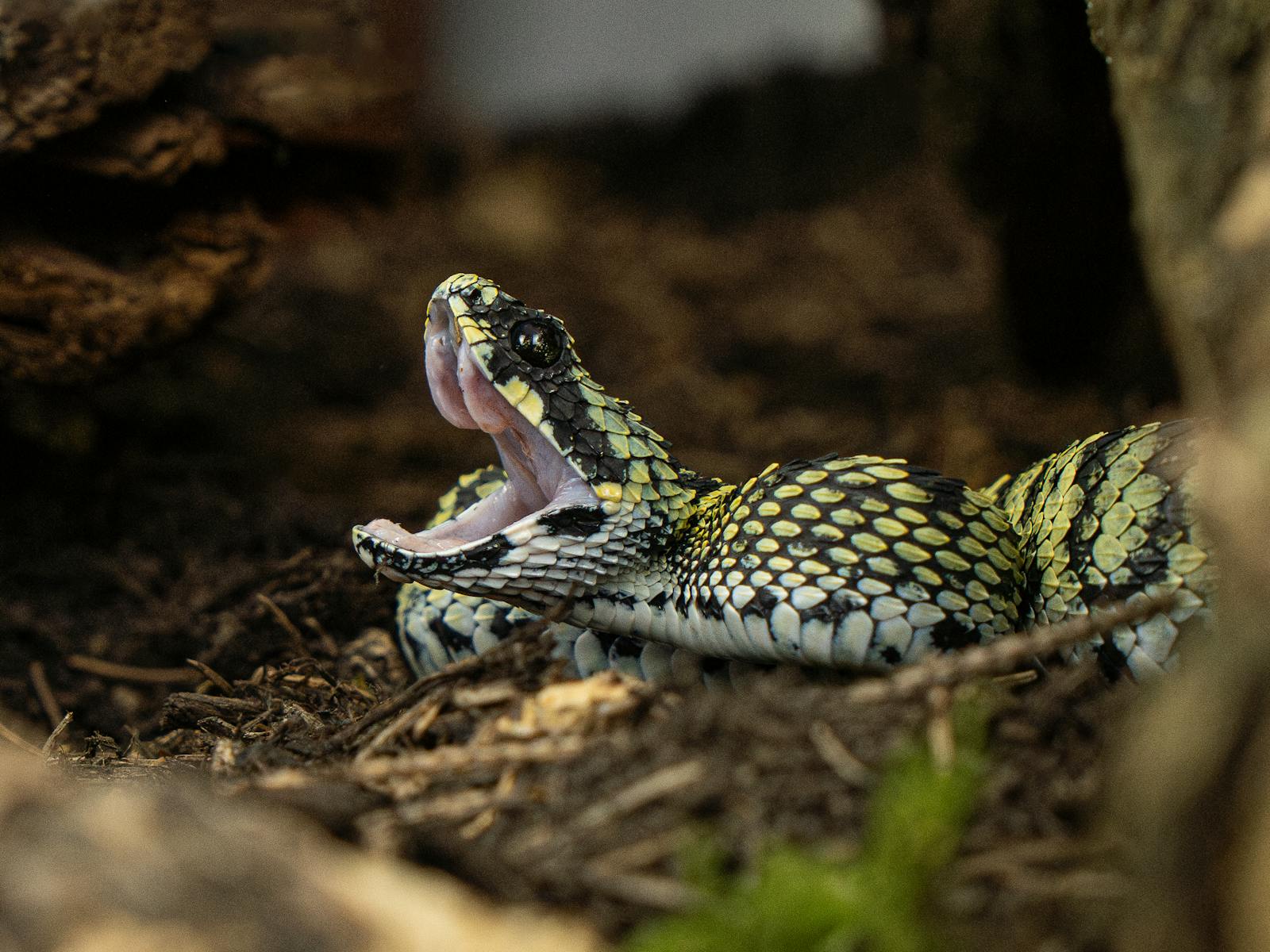
Unlike humans who get only two sets of teeth in a lifetime, snakes have evolved an impressive continuous tooth replacement system that ensures they never go without their essential hunting tools. Snake fangs are subject to significant wear and tear and can break during feeding or defensive strikes, making regular replacement necessary for survival. Most venomous snakes develop replacement fangs that grow alongside their functional fangs, waiting in reserve like understudies ready to take over when needed.
These replacement fangs develop in special tissue folds behind the active fangs, gradually mineralizing and moving into position as the active fang wears down or breaks. In some species, this replacement can happen remarkably quickly—within days or weeks—ensuring minimal disruption to the snake’s hunting capabilities. This conveyor-belt approach to dentition represents one of the most efficient tooth replacement systems in the vertebrate world, allowing snakes to maintain their predatory edge throughout their lives.
Venom Delivery Mechanics

The mechanics of venom delivery vary dramatically between different fang types, reflecting distinct evolutionary approaches to the same challenge. In front-fanged elapids with their fixed fangs, venom is primarily injected through pressure created when the snake bites down, with some species capable of controlling venom output through specialized muscle control. Vipers with their hinged fangs create significant pressure within the venom gland through specialized compressor muscles that essentially squeeze venom through the hollow fang like a syringe.
Rear-fanged snakes typically employ a chewing motion that allows venom to flow along grooved fangs through capillary action rather than pressure-driven injection. Some advanced vipers can even control the composition of their venom, delivering different toxic cocktails depending on whether they’re hunting or defending themselves. These sophisticated mechanisms allow snakes to optimize their venom use, conserving this metabolically expensive resource while ensuring effective prey immobilization.
Size Matters: Fang Length and Function
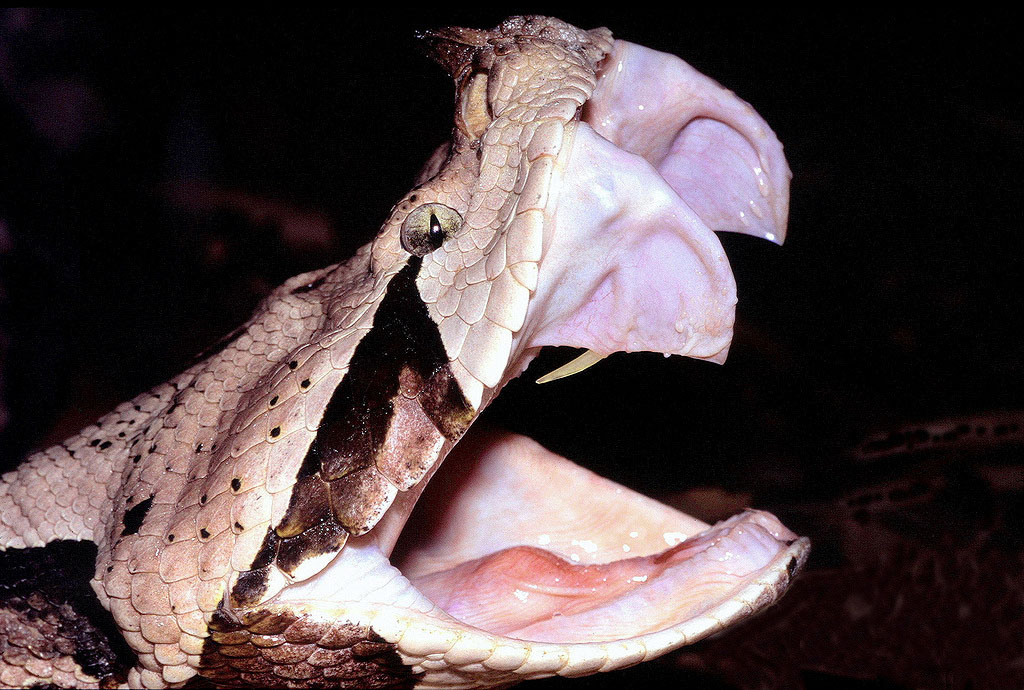
The length and structure of snake fangs correlate strongly with their ecological niche and hunting strategy, showing remarkable adaptation to specific prey types. Species that hunt heavily-furred mammals often possess longer fangs capable of penetrating through fur to reach vital tissues, with the Gaboon viper’s enormous fangs representing an extreme example of this adaptation. Conversely, snakes that primarily target thin-skinned prey like birds, lizards, or amphibians often have shorter fangs that require less penetration to deliver venom effectively. Marine snakes like sea kraits typically have shorter fangs adapted for capturing slippery fish, focusing more on quick-acting venom than deep tissue penetration.
The ratio between fang length and head size also reveals evolutionary trade-offs—extremely long fangs require specialized jaw adaptations to accommodate them when the mouth is closed, sometimes limiting the range of prey sizes a snake can consume. These variations in fang morphology demonstrate how natural selection has fine-tuned these weapons to match specific predatory challenges.
Specialized Adaptations: Beyond Basic Fangs
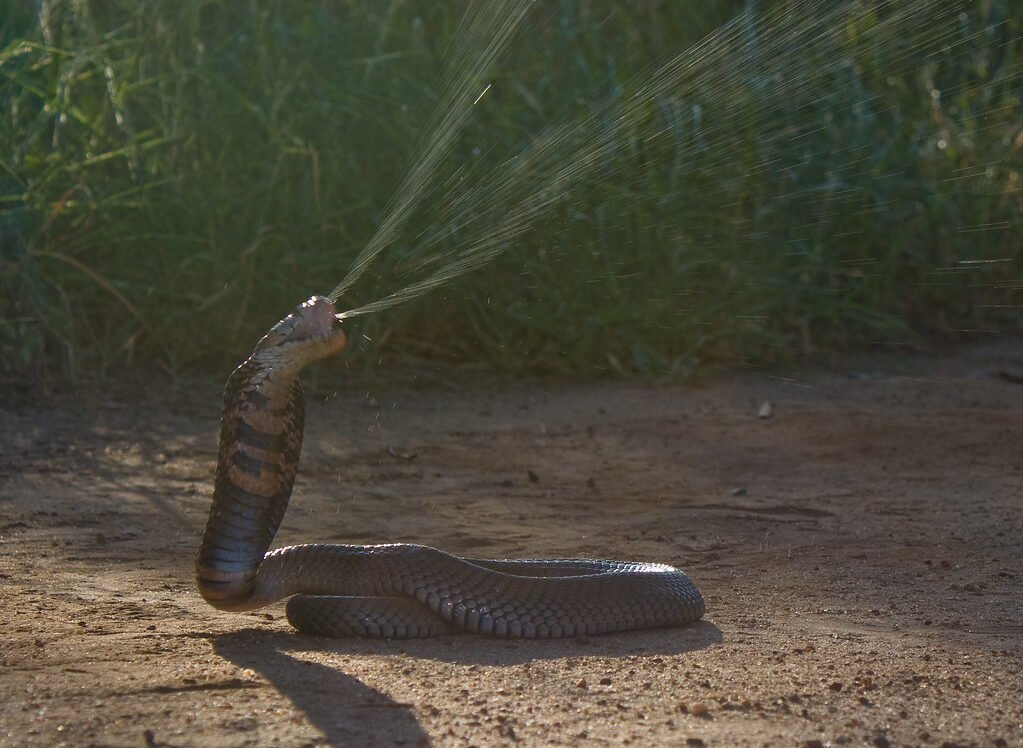
Beyond the standard fang types, snakes have evolved numerous specialized adaptations that enhance their predatory capabilities. The spitting cobras represent perhaps the most dramatic example, with modified fangs featuring a forward-facing discharge orifice that allows them to project venom several feet toward a threat’s eyes. Some sea snakes have developed additional dentition behind their primary fangs to help grip slippery fish prey, essentially creating a redundant system for prey capture. Certain rear-fanged species have evolved enlarged, grooved teeth with exceptionally deep channels that approximate the efficiency of hollow fangs while maintaining structural strength.
The boomslang, despite being rear-fanged, has developed such efficient venom delivery mechanics that it can deliver lethal envenomations despite its seemingly primitive fang position. These specialized adaptations demonstrate the remarkable evolutionary plasticity of snake dentition, with natural selection continuously refining these structures to match specific ecological challenges.
Fang Structure and Venom Type Correlation
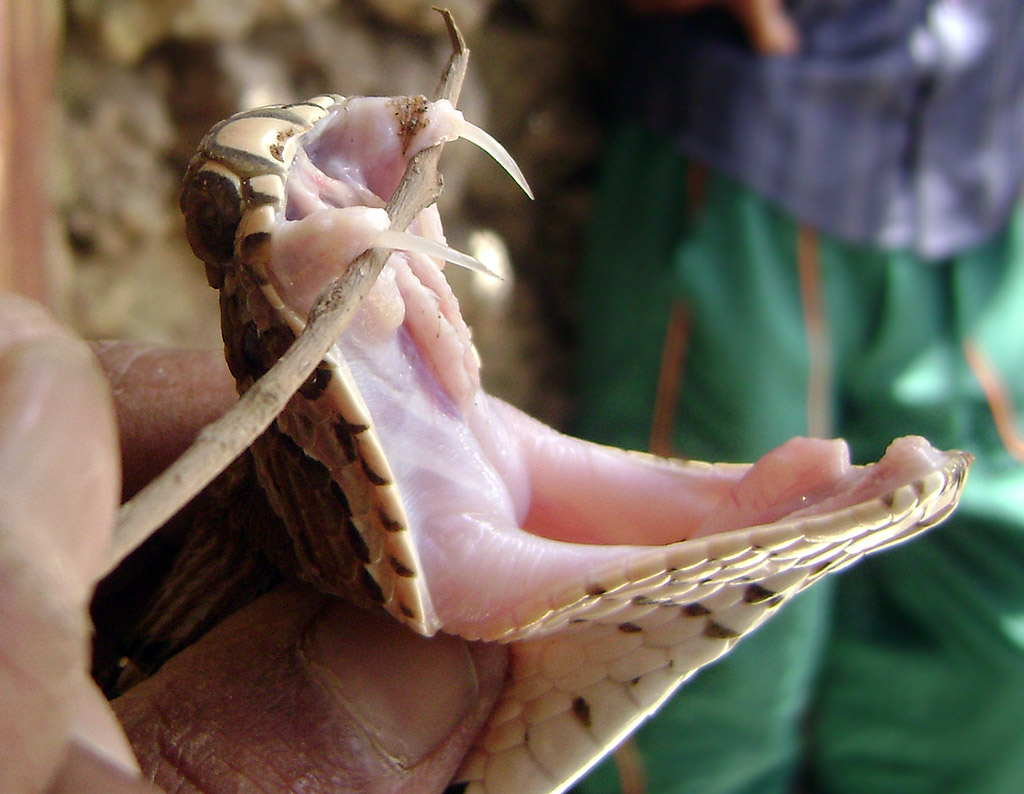
Fascinating correlations exist between fang structure and the types of venom snakes produce, reflecting co-evolution of these complementary systems. Front-fanged elapids with their relatively shorter, fixed fangs typically produce fast-acting neurotoxic venoms that rapidly immobilize prey, compensating for their need to maintain contact during envenomation. Vipers with their deep-penetrating hollow fangs often employ hemotoxic and cytotoxic venoms that destroy tissue and disrupt blood clotting, allowing them to track prey after a single strike and release.
Rear-fanged snakes, which must chew to deliver venom effectively, frequently produce slower-acting toxins that gradually subdue prey as the snake maintains its grip. These correlations aren’t absolute—many species produce complex venoms with multiple toxin types—but they demonstrate how selective pressures have shaped both the delivery mechanism and the payload it delivers as complementary parts of an integrated hunting system. This relationship between fang morphology and venom composition represents one of nature’s most sophisticated examples of co-evolved traits.
Medical Significance of Different Fang Types
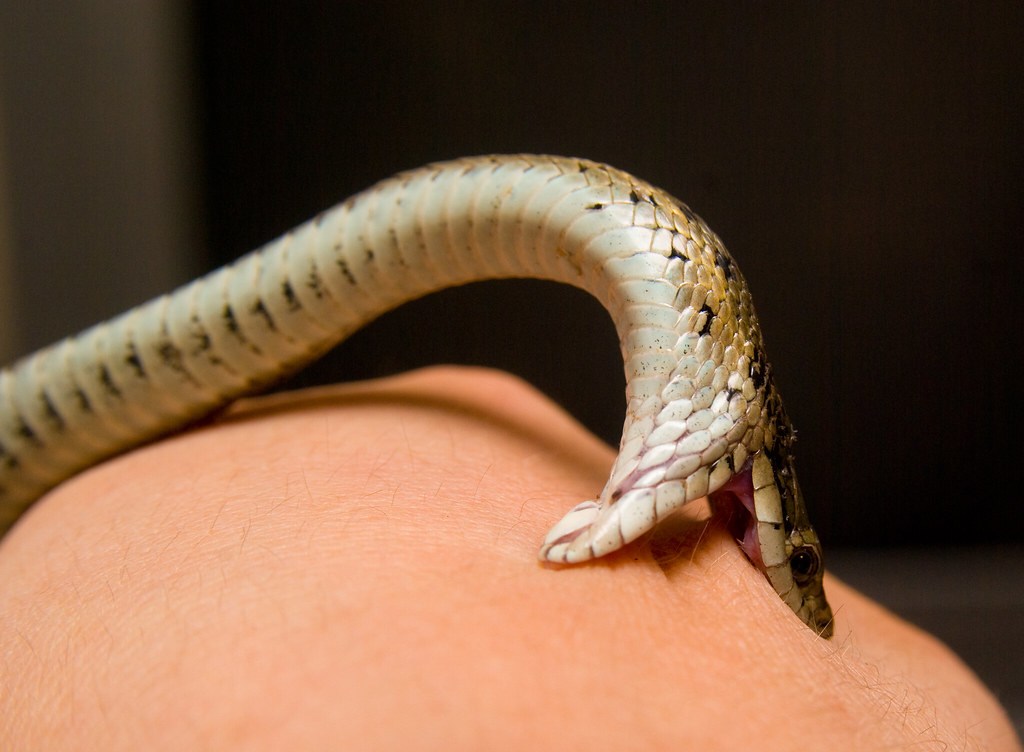
The medical consequences of snakebite vary significantly based on fang structure, creating different challenges for treatment and prevention. Front-fanged elapids with their fixed fangs typically deliver predictable, symmetrical bite patterns with distinctive fang punctures, though their neurotoxic venoms can cause rapid respiratory paralysis requiring immediate medical intervention. Vipers with their hinged fangs often create deeper tissue damage with significant bleeding and tissue destruction, sometimes leaving distinctive paired fang marks that help in species identification for antivenom selection.
Rear-fanged snakes typically produce less predictable bite patterns with multiple puncture wounds from both fangs and regular teeth, sometimes creating confusion in diagnosis. The depth of fang penetration also affects venom distribution in the victim’s body—deeper injections from solenoglyphous fangs can deposit venom into muscle tissue and circulatory vessels, potentially accelerating systemic spread. Understanding these differences helps medical professionals anticipate complications and select appropriate treatments based on the bite pattern and regional snake species.
Cultural Perceptions and Misconceptions
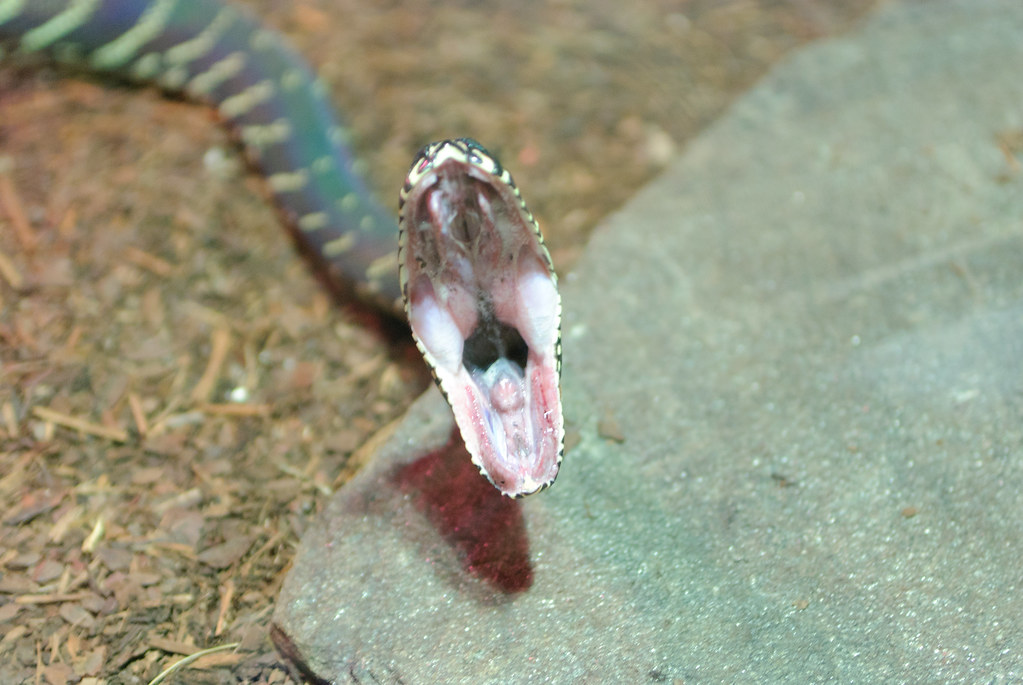
Snake fangs have occupied a significant place in human culture and mythology for millennia, often imbued with symbolic meaning that transcends their biological function. Ancient civilizations from Egypt to Mesoamerica depicted serpents with exaggerated fangs as symbols of both destruction and healing, reflecting humanity’s ambivalent relationship with these animals. Modern media continues to perpetuate misconceptions about snake fangs, frequently portraying them as constantly visible outside the mouth—an anatomical impossibility for most species.
Another common misconception involves the identification of venomous snakes by fang visibility, leading to dangerous assumptions about which snakes pose medical threats. Even the term “poisonous snake” represents a persistent misconception, as snakes are venomous (actively injecting toxins) rather than poisonous (toxic when consumed). These cultural perceptions and misconceptions influence conservation efforts and public safety education, highlighting the importance of accurate scientific communication about snake dentition and venom systems.
Snake fangs represent one of nature’s most remarkable examples of specialized adaptation, with different designs solving the same fundamental challenge: efficient prey capture through venom delivery. From the sophisticated hinged fangs of vipers to the fixed front fangs of cobras and the rear-positioned fangs of many colubrids, these structures tell an evolutionary story of predatory innovation. Understanding fang types helps us appreciate the ecological roles these animals play and can literally save lives by informing medical responses to envenomation. As with many aspects of natural history, snake fangs remind us that form follows function in the endless adaptations that characterize life on Earth. By looking beyond our instinctive fear of these animals, we can appreciate the remarkable engineering that has evolved in their jaws—a testament to the power of natural selection to create specialized tools for survival.



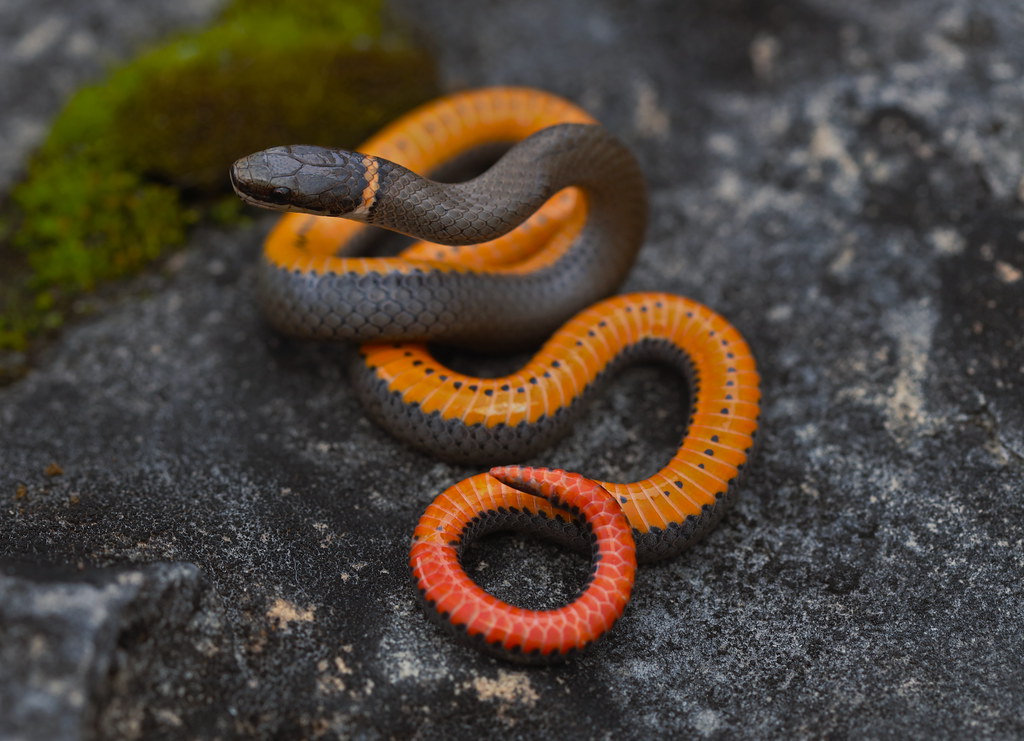
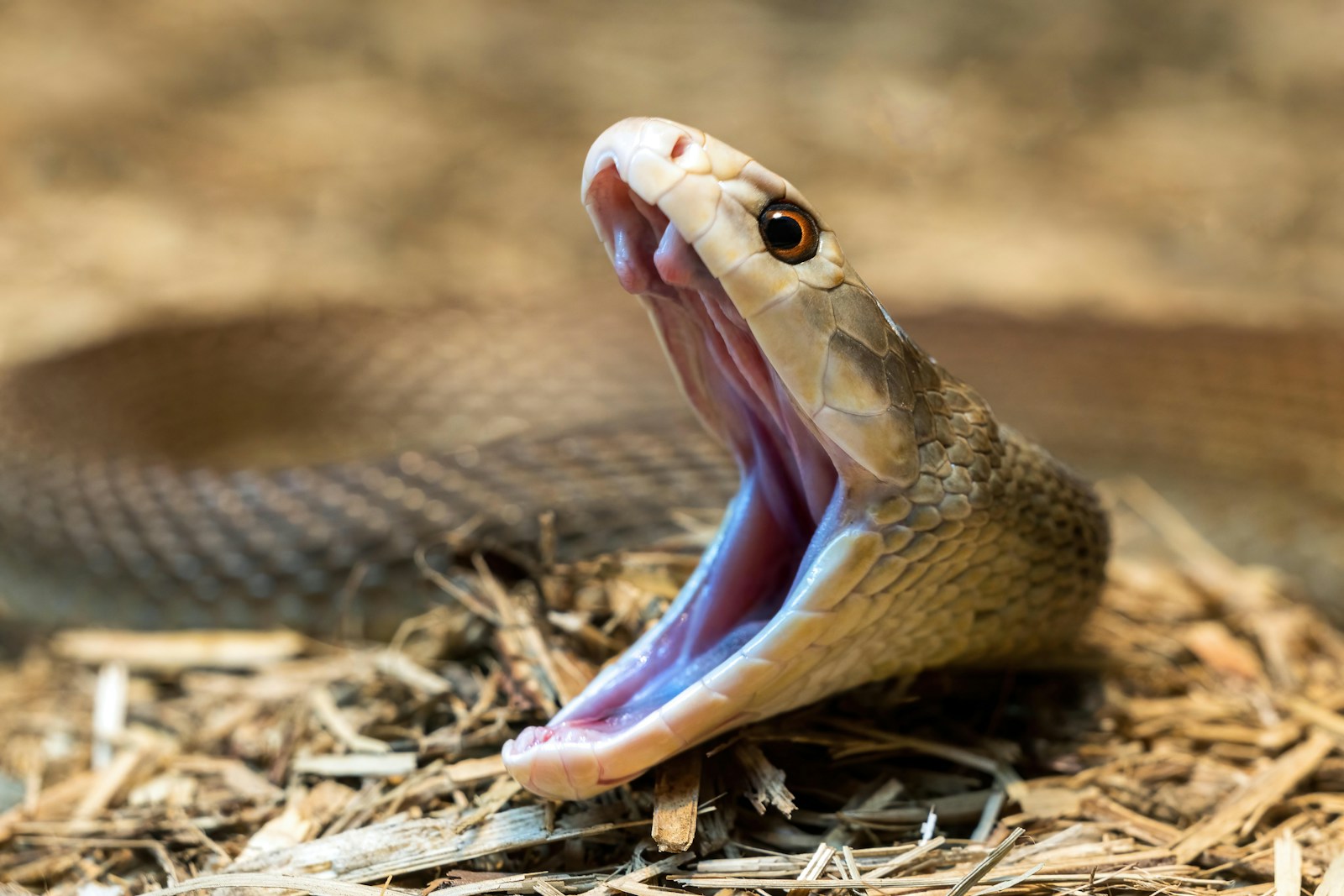
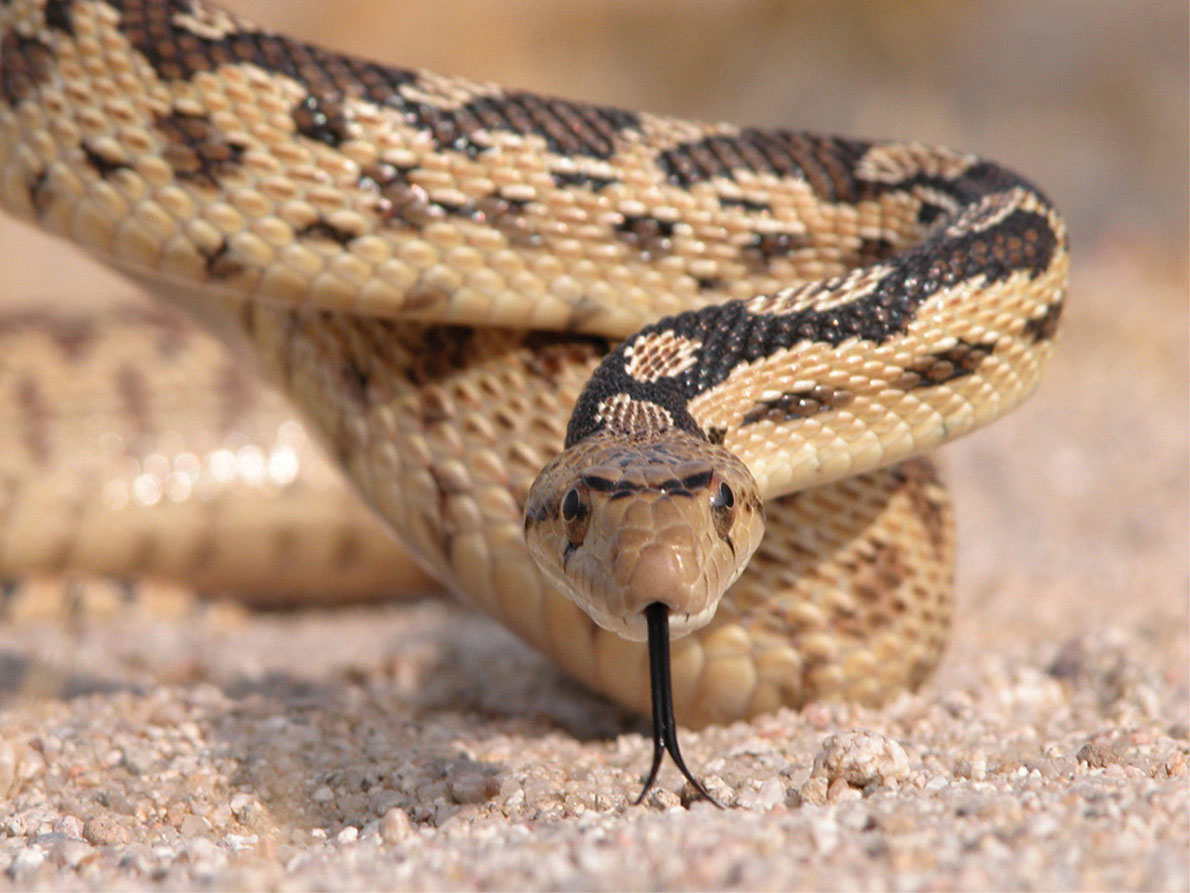

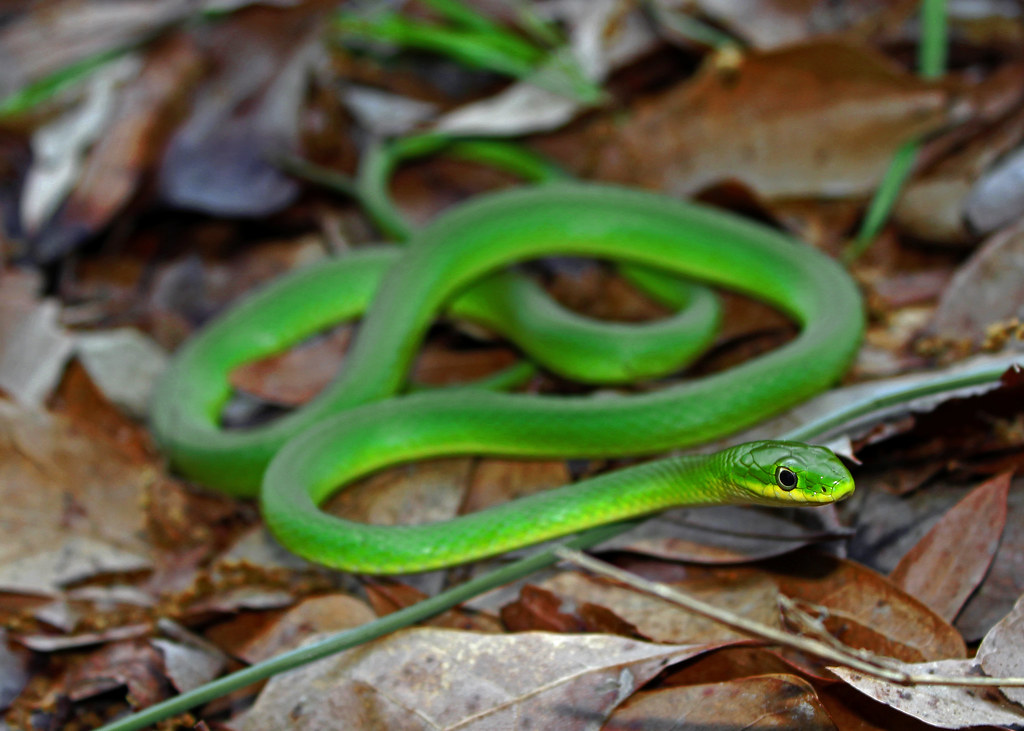


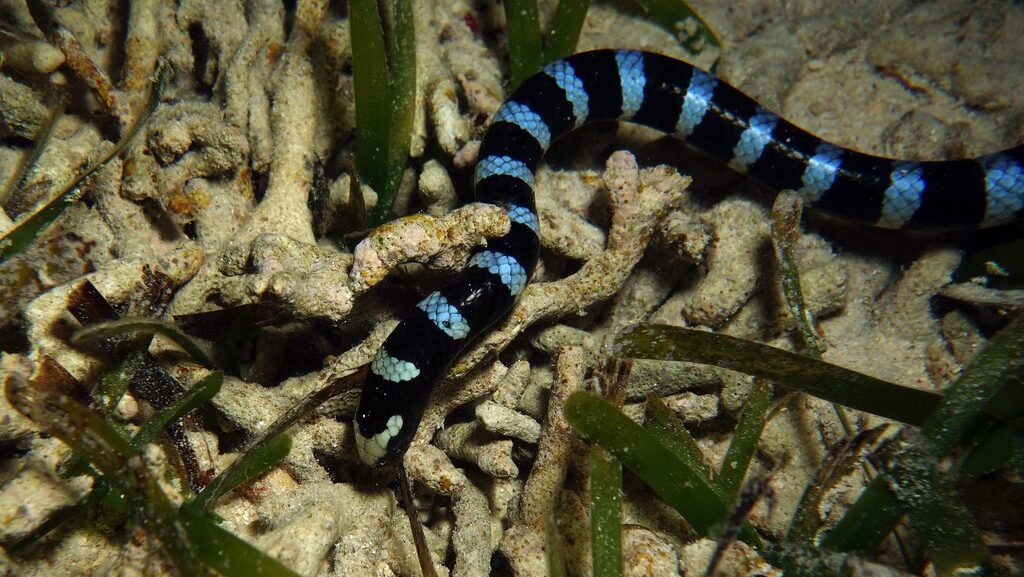



Leave a Reply